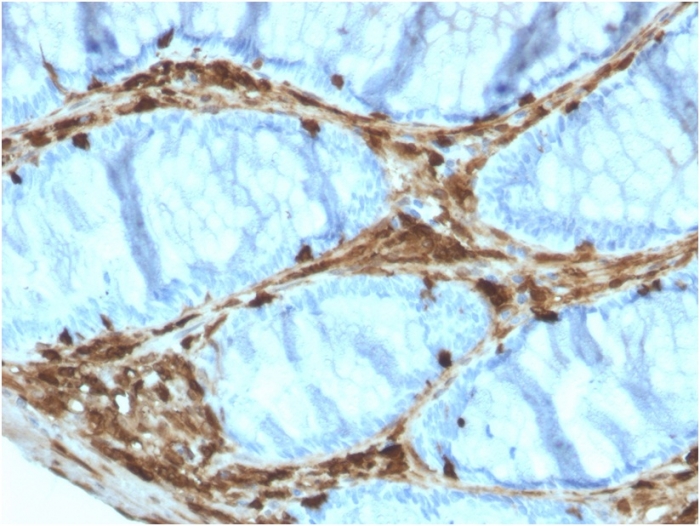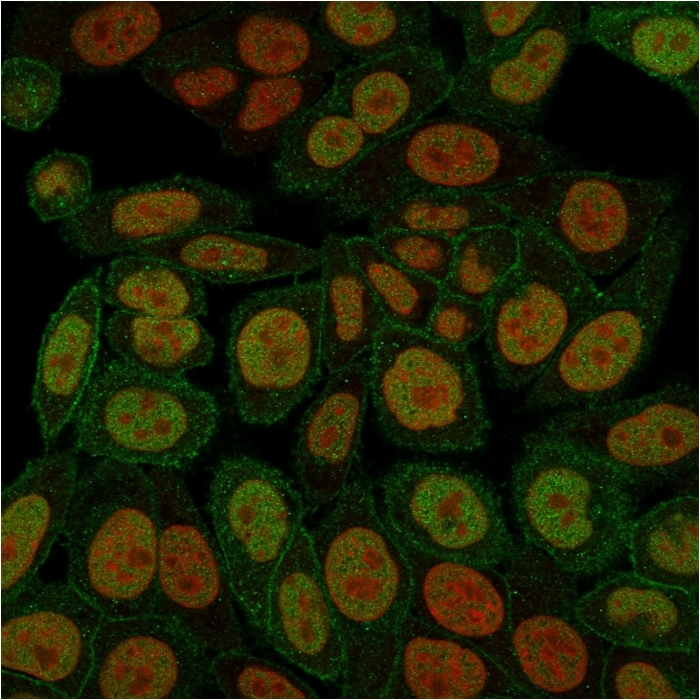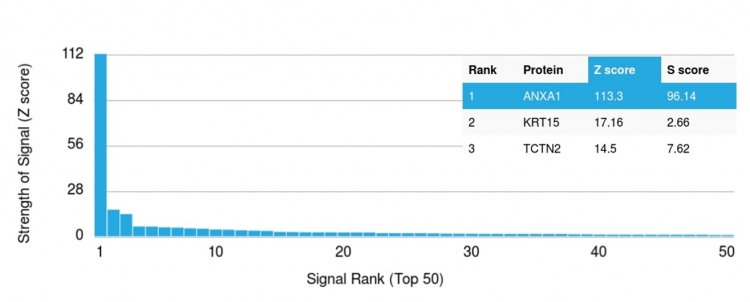Free Shipping in the U.S. for orders over $1000. Shop Now>>

Formalin-fixed, paraffin-embedded human Colon Carcinoma stained with Annexin A1 Mouse Monoclonal Antibody (ANXA1/3566).

Formalin-fixed, paraffin-embedded human Prostate Carcinoma stained with Annexin A1 Mouse Monoclonal Antibody (ANXA1/3566).

SDS-PAGE Analysis Purified Annexin A1 Mouse Monoclonal Antibody (ANXA1/3566). Confirmation of Purity and Integrity of Antibody.

Immunofluorescence staining of paraformaldehyde-fixed HeLa cells with Annexin A1 Mouse Monoclonal Antibody (ANXA1/3566) followed by goat anti-Mouse IgG-CF488 (Green). Nuclei are labeled with Reddot (Red).

Flow Cytometric Analysis of PFA-fixed HeLa cells using Annexin A1 Mouse Monoclonal Antibody (ANXA1/3566) followed by goat anti-Mouse IgG-CF488 (Blue); Isotype Control (Red).

Analysis of Protein Array containing more than 19,000 full-length human proteins using Annexin A1 Mouse Monoclonal Antibody (ANXA1/3566). Z- and S- Score: The Z-score represents the strength of a signal that a monoclonal antibody (MAb) (in combination with a fluorescently-tagged anti-IgG secondary antibody) produces when binding to a particular protein on the HuProtTM array. Z-scores are described in units of standard deviations (SD's) above the mean value of all signals generated on that array. If targets on HuProtTM are arranged in descending order of the Z-score, the S-score is the difference (also in units of SD's) between the Z-score. S-score therefore represents the relative target specificity of a MAb to its intended target. A MAb is considered to specific to its intended target, if the MAb has an S-score of at least 2.5. For example, if a MAb binds to protein X with a Z-score of 43 and to protein Y with a Z-score of 14, then the S-score for the binding of that MAb to protein X is equal to 29.
The ANXA1 gene belongs to the annexin family, and contains 4 annexin repeats. A pair of annexin repeats may form one binding site for calcium and a phospholipid. ANXA1 promotes membrane fusion and is involved in exocytosis. The gene for ANXA1 is upregulated in hairy cell leukemia (HCL), and its protein expression is specific for HCL. Detection of ANXA1 provides a simple, highly sensitive and specific assay for diagnosing HCL. Annexin A1 has also been found to be protective against DNA damage induced by heat in breast cancer cells, suggesting it is involved in tumor suppressive and protective activities, and also is associated with treatment resistance.
There are no reviews yet.